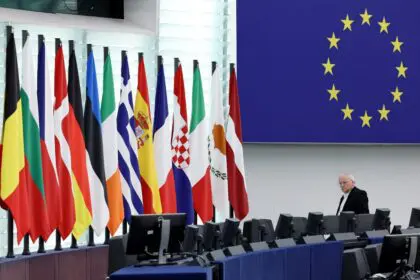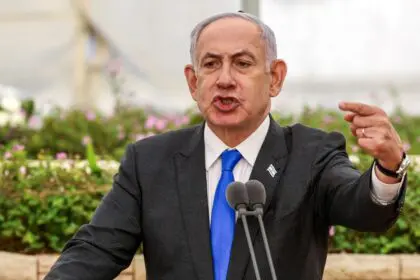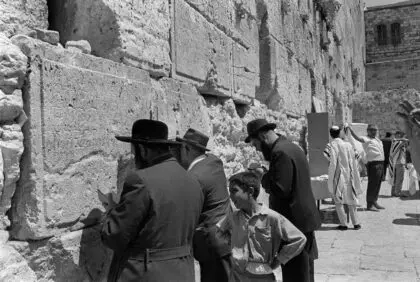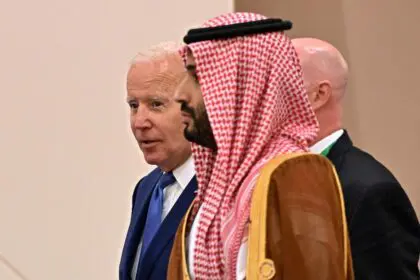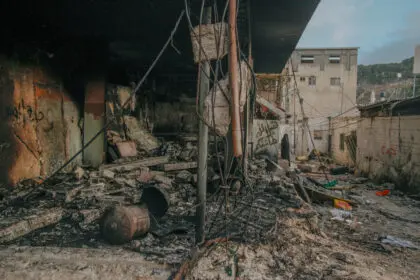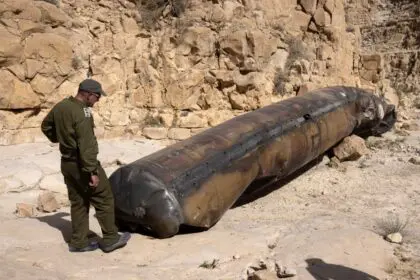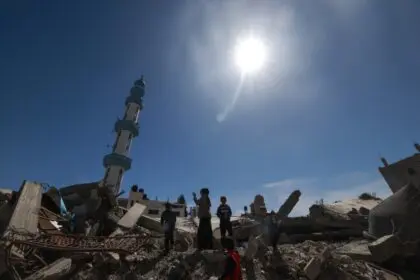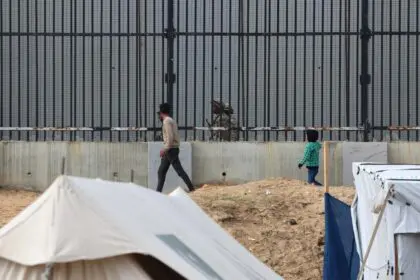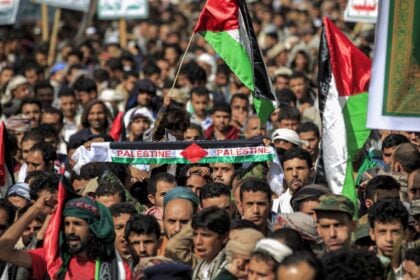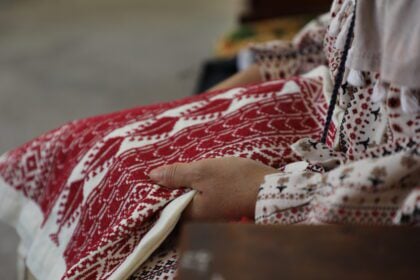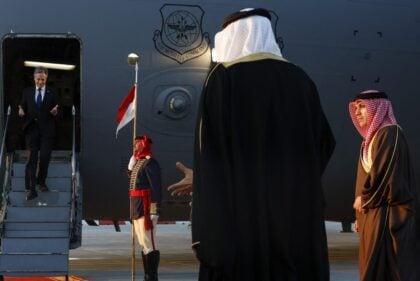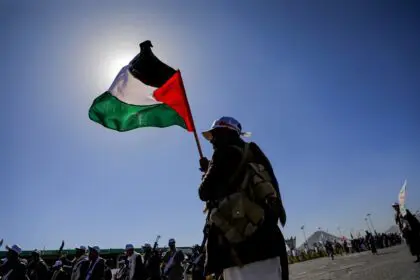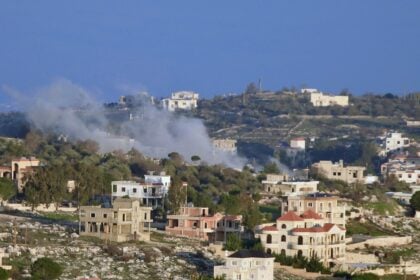
Introduction
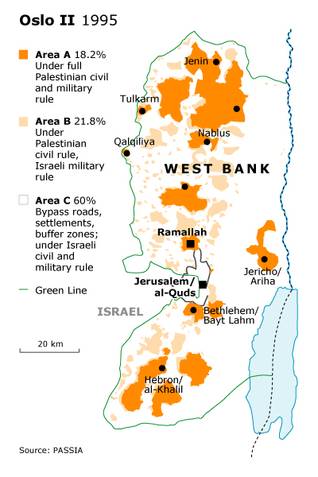
Based upon the Declaration of Principles on Interim Self Government (DoP) signed between the PLO and the Government of Israel on 13 September 1993, the Palestinian National Authority (PNA) was created as an interim (five-year) administration to govern parts of the West Bank and the Gaza Strip.
Based upon the Oslo-II Accord (28 September 1995) the West Bank and the Gaza Strip were divided into so-called A, B, and C Areas. In the A Areas both the civil and military administration is in the hands of the Palestinian National Authority (PNA). In the B Areas the civil administration is in the hands of the PNA, whereas the military administration remains under Israel’s control.
In the C Areas both the civil and military administration remains under Israeli control. In practical terms, the PNA currently has formal control over 18.2 percent of the total territory. Israel retains control over Palestine’s external security, air space, sea lanes and electromagnetic sphere.
Despite still awaiting the conclusion of the permanent status negotiations with Israel, the Palestinian Authority (PA) has the institutional features of a state, with a legislative branch (Palestinian Legislative Council, PLC), an executive branch (the government) and a judicial branch that is nominally independent. The PA is headed by a president, who appoints the prime minister from the PLC to lead the government.
Throughout history, Palestine has dealt with several judiciary systems, having been part of the British Mandate, Jordan (West bank), Egypt (Gaza Strip), and being subject to Israeli military occupation from 1967. Given their temporary transitional status, Palestine does not have a Constitution. Since the Oslo Accords, efforts have been made to develop an appropriate constitutional framework.
The PLC passed a Basic Law to serve as a provisional constitution during the interim period leading to eventual statehood. Article 1 of the Basic Law states that ‘Palestine is part of the large Arab World, and the Palestinian people are part of the Arab Nation. Arab unity is an objective which the Palestinian People shall work to achieve’.
It defines the Palestinian People as the source of all power, which ‘shall be exercised through the legislative, executive, and judicial authorities, based on the principle of separation of powers, and in the manner set forth in this Basic Law’. It also states that Jerusalem is the capital of Palestine.
The Presidency
The president of the Palestinian Authority (PNA) is elected for a period of four years by the Palestinian people in the Palestinian territories. The president is the leader of the armed forces, and appoints the prime minister from among the members of the Palestinian Legislative Council (PLC), with whom he shares power. The president does not have the authority to dissolve the PLC or to call for early elections.
In 1996, Yasser Arafat, chairman of the Palestine Liberation Organization (PLO), became the first president of the PNA. After his death on 11 November 2004, he was succeeded by Mahmoud Abbas (also known as Abu Mazen). Despite his term ending on 9 January 2009, Abbas is still the acting president of the PNA.
In 2005, after Israel withdrew its forces and settlers from the Gaza Strip, the first municipal elections were held since the Oslo peace accords. Signed by Arafat and Israeli leader Yitzhak Rabin in 1993 and 1995, the accords remain the basis of relations between the two states. Hamas, which had boycotted the presidential elections in 1996 and 2005, participated in these elections. It won a significant number of seats, giving it control of the councils in several of the main cities in Gaza and the West Bank. Following this success, Hamas also decided to run in the 2006 PLC elections, winning 74 of the 132 seats. Fatah obtained only 45 seats.
On 17 March 2007, after months of clashes between their supporters, Fatah and Hamas agreed to form a unity government headed by Hamas Prime Minister Ismail Haniyeh. However, this failed to bring calm and tensions culminated in a military conflict in June of that year. Hamas took control of the Gaza Strip and removed Fatah officials.
Mahmoud dismissed Haniyeh, who refused to step down and continued to exercise prime ministerial authority in the Gaza Strip. The ensuing political crisis resulted in the dissolution of the unity government and the de facto division of the Palestinian territories into the West Bank, governed by Fatah, and the Gaza Strip governed by Hamas. Abbas named Rami Hamdallah as prime minister on 2 June 2013.
The Executive
The PNA Cabinet is appointed by the Prime Minister – initially the Cabinet was appointed by the President, but in 2003 the Basic Law was amended under pressure of Western donor states – and is accountable to the legislature (the Palestinian Legislative Council, PLC).
Once appointed by the President, the Prime Minister must form his government within three weeks (Article 66 of the Basic Law). Article 63 states that ‘the Council of Ministers (Government) is the highest executive and administrative tool, which shoulders the responsibility of implementing the program that will be approved by the Legislative Authority (PLC), except the executive jurisdictions of the President of the (Palestinian) National Authority as specified in the Basic Law, the Executive and administrative powers, shall be the jurisdiction of the Council of Ministers’.
The Legislative
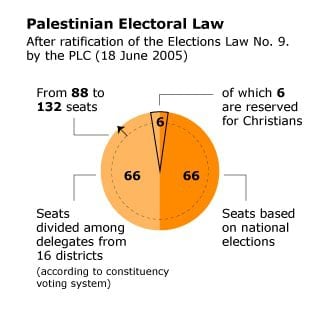
The Palestinian Legislative Council (PLC) is the legislative branch of the Palestinian National Authority, and is a fully elected unicameral body comprising (currently) 132 representatives. The PLC is responsible for approving all government cabinet positions proposed by the Prime Minister, and must also confirm the Prime Minister himself upon nomination by the president. The PLC is directly elected on a multimember constituency basis, and its members are meant to serve for five years.
The PLC passed a Basic Law to serve as a provisional constitution during the interim period leading to eventual statehood.
On 18 June 2005, major changes were made to Palestinian Electoral Law when the PLC ratified Elections Law No. 9. Those changes include an increase in the number of PLC seats from 88 to 132 (with six seats reserved for Christians). Furthermore, this time, a mixed system was maintained: half of the seats (66) were distributed among the various candidates based upon a national list and on the basis of the number of votes won; the remaining 66 seats, which were spread over 16 districts, were divided according to the constituency voting system.
The Judicial
Palestine has no official Constitution. A committee of Palestinian legal figures has drafted a constitutional document (Basic Law) for statehood. The introductory chapter of this document states: ‘The fact that the temporary Basic Law was meant to serve for the interim period makes the case that this is a crucial step along the path to achieving the national and historical rights of the Palestinian people.
No one can abolish the peoples’ right to seek the right of return and self-determination, including the establishment of the independent Palestinian state with Jerusalem as its capital’.
The Palestinian Legislative Council passed this Basic Law, which states that the principles of the Sharia (Islamic law) will be the main source of legislation (Article 4). The committee of the Palestinian Judicial Authority reports to the Central Committee of the PLO, which has encouraged its work but not endorsed it.
Furthermore, the Basic Law acknowledges that the judiciary branch will be independent and will be the responsibility of the courts. Their varieties, levels, jurisdictions, and conditions for appointment of their judges will be regulated by law. The structure, jurisdiction, and rulings of the courts will be in accordance with law.
The rulings will be announced and executed in the name of the Palestinian people. It also states that the judges will be independent, and not be subject to any authority other than the authority of law while exercising their duties, and that no other authority may interfere in the judiciary or in the judicial affairs. Article 171 states that the ‘Judicial authority shall be assumed by the courts under the supervision of the Supreme Judicial Council’.
It should be mentioned that the history of the Palestinian Judiciary has faced years of political instability, which ultimately resulted in the loss of the Palestinian people’s faith in their justice system.
Also, Israeli occupation policies, including removing PNA control over Palestine and crippling restrictions of movement, have severely affected the operation of the Palestinian judicial system (which requires the presence of three judges, a prosecutor, a defence lawyer and a clerk for trials to be legal). Despite attempts to reform it, the Palestinian judiciary remains weak and insufficiently independent of the executive power.
Local Government
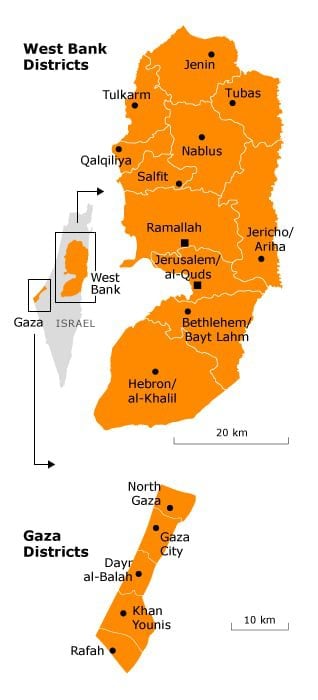
In accordance with the Oslo Accords, Palestine was divided into three areas (A, B, and C Areas) and 16 governorates under the jurisdiction of the Palestinian National Authority.
The 16 governorates are (in alphabetic order): Jerusalem, Deir al-Balah (Dayr al-Balah), Bethlehem, Gaza City, Hebron, Jenin, Jericho, Khan Younis, Nablus, North Gaza, Qalqiliya, Ramallah/al-Bireh, Rafah, Salfit, Tubas and Tulkarm.
Article 85 on local administration states: ‘The country shall be organized, by law, into local administrative units enjoying juridical personality. Each unit shall have a council elected directly as prescribed by law. The law shall determine the jurisdiction ‘functions’ of the administrative units, their financial resources, their relations with central authority, and their role in the preparation and implementation of development plans.
Further, the law shall determine the aspect of oversight over these units and their various activities. Demographic, geographical, economical, and political parameters shall be taken into consideration at the time of dividing the country administratively, to provide for the integrity and unity of soil and interests of the country’.
After the crisis that erupted between Fatah and Hamas in 2007 and which has left the former in control of the West Bank and the latter in control of the Gaza Strip, in reality two separate authorities were established. Governorates in the West Bank answer to the PNA; those in the Gaza Strip to the Hamas-led government. Both authorities have contributed to increasing the divide in local governance.
Palestinian Security Services

Palestinian security forces march during a training session at the Muqataa or Palestinian Authority headquarters in the West Bank city of Ramallah. Photo AFPThe Oslo Accord of 1993 provided for the establishment of the Palestinian security services to maintain public safety in the Palestinian territories as well as to coordinate security efforts between the Palestinian Authority (PA) and Israel to combat what Israel calls ‘expected’ military attacks by the Palestinian resistance on Israeli targets.
The issue of security has thus been at the heart of Palestinian-Israeli relations for decades. Similarly, it has become the cornerstone of all political agreements and steps related to the revival of the peace process between the two sides since the establishment of the PA in 1994.
The start of the Palestinian security services was modest, with a personnel that initially did not exceed 3,000. By early 2000, this number had increased to more than 30,000, in part due to the integration of the Palestinian Liberation Organization‘s (PLO) forces. Furthermore, a large number of security offices were established in the West Bank and Gaza Strip. However, the second intifada (uprising) in 2000 prompted Israel to destroy most of these offices in 2001 and during Operation Defensive Shield in 2002.
After the end of the second intifada in 2005, Israel aimed to keep the security services weak both in the West Bank and the Gaza Strip. The repercussions of this were felt particularly acutely in the Gaza Strip, where the security services were unable to suppress the al-Qassam Brigades, the military wing of the Hamas organization, which in 2007 seized control of the security apparatus and expelled all security personnel from their positions.
The PA security services consist of three main branches: the Interior Security Forces, the General Intelligence Service and the National Security Forces, in addition to a non-executive supervisory body, the National Security Council, which oversees all of the PA’s security organs.
1. Internal Security Forces
The Internal Security Forces include several bodies such as the Civil Police Force, Civil Defence and Preventive Security Service (PSS). Perhaps the most important and prominent of these is the PSS, which was previously affiliated with the Ministry of Interior.
After the legislative elections in January 2006, the responsibilities of the apparatus were transferred from the government to the presidency. Comprising approximately 5,000 personnel, the PSS is regarded as the most organized of the security bodies. It is responsible for internal security and for pursuing opponents of peace. Since 2007, the apparatus has been tasked with leading the Gaza Strip branch remotely. It also collects information on all local and international organizations operating in the Palestinian territories.
However, it is regularly criticized for its role in making politically motivated arrests, particularly of Hamas supporters.
Jibril Rajoub, the former head of the service, was accused of handing over Hamas members to Israel and of involvement in torturing several Hamas prisoners to death, including prominent leader Muhyi al-Din al-Sharif.
Civil Police Force: This civil body was established after the Oslo Accord under the chairmanship of Major General Ghazi Jabali. It is currently headed by General Hazem Attallah in the West Bank and Major General Taysir al-Batsh in the Gaza Strip. Among the force’s tasks are internal security, civilian and infrastructure protection and law enforcement. The force has approximately 8,000 members in the West Bank and an estimated 5,000 members loyal to Hamas in the Gaza Strip.
In the West Bank, the force receives high-level technical training sponsored by some European countries. A number of directorates fall under the force, including the Traffic Police Directorate, the Directorate of Criminal Investigation, the Directorate of Drug Control and the Riot Police.
2. General Intelligence Service
The General Intelligence Service (GIS) is considered to be one of the most important security services that report directly to the president. The head of the GIS is appointed by the president and has the rank of minister. The roots of the service go back to the 1960s, when it was established under the supervision of the former prominent PLO official Salah Khalaf. The service has approximately 3,500 members, mostly from the Fatah party.
Major General Amin al-Hindi was head of the GIS from the establishment of the PA in 1994 until 2005. He was succeeded by Brigadier General Tariq Abu-Rajab, who was replaced in 2007 by Major General Tawfiq Tirawi after Abu-Rajab failed to prevent the 2007 takeover of the Gaza Strip by the al-Qassam Brigades. After Tirawi was appointed as head of the Jericho Security Academy, Major General Majid Faraj was appointed as head of the service in September 2009.
Although some of the tasks assigned to the GIS include working outside the Palestinian borders to detect external threats to national security, including espionage, sabotage and conspiracies, the service works intensively inside the Palestinian territories to prevent acts that could endanger the security and safety of the Palestinian people. Therefore, the service has collaborated with the PSS to pursue Hamas elements and supporters in the West Bank as well as the Gaza Strip. Deaths were recorded in the prisons and headquarters of the GIS.
3. National Security Forces
The National Security Forces (NSF) are the nucleus of the future Palestinian army. The NSF’s tasks include protecting the land, sea and air borders, controlling the entrances and exits of the cities, and assisting the police when they are unable to maintain security. The NSF has four main apparatuses: 1. Public Security, which operates in the field of intelligence; 2. Naval Police, which serves as the coast-guard. They are based in Gaza and are tasked with preventing the smuggling of arms and drugs. They were integrated into the GIS after Hamas’ takeover of the Gaza Strip; 3. Aviation Security, which is a small unit with several helicopters used for transporting Palestinian leaders internally; 4. Military Intelligence, which collects information about ‘external enemies’ and supervises the work of the military police.
Military Equipment
The Oslo Accord stipulated the quality and quantity of the weapons the Palestinian forces could use. Israel was against giving the Palestinian forces any kind of medium and heavy weapons, while allowing them to use some types of light weapons, including Kalashnikov rifles, small pistols and limited quantities of ammunition. The NSF possesses a small number of light PTR-70 armoured vehicles and BDRM-2, which are used for dispersing violent riots. The Internal Security Forces have a large number of military jeeps.
Israel remains very cautious about allowing the development of the Palestinian security services, fearing that Palestinian weapons will be used against Israeli forces. Therefore, importing ammunition goes through many negotiations with Israeli political and security officials and takes a long time. Moreover, all the weapons in the possession of the Palestinian security services are registered with Israel. In the event of Israel seizing a weapon in any act of resistance against the Israeli army, the weapon is confiscated and the person who had the weapon is questioned and held accountable. The individual involved is also punished by being blacklisted, accused of involvement in terrorist activities and prosecuted.
Security Service Reform
After the weaknesses the security services displayed during the second intifada and the Palestinian divide in 2007, the Palestinian leadership in Ramallah initiated extensive reforms. These reforms are the subject of ongoing debate among Palestinians, who view an integrated security sector as essential to protect civilians against Israeli military operations inside the Palestinian territories. Israel, on the other hand, views the reforms as one way to enhance security coordination between the two sides and provide the infrastructure for what it calls ‘the fight against terrorism’. Accordingly, the Palestinian security services have been retrained with US supervision and funding.
Observers of Palestinian affairs believe that the PA spends approximately 30 per cent of its general budget on security. A study conducted in December 2016 estimated that the number of security personnel in the West Bank and Gaza Strip amounts to approximately 83,000. This is an average of one personnel for every 48 citizens, one of the highest ratios in the world. The United States, by contrast, has one police officer for every 485 citizens.
Latest Articles
Below are the latest articles by acclaimed journalists and academics concerning the topic ‘Politics’ and ‘Palestine’. These articles are posted in this country file or elsewhere on our website:



